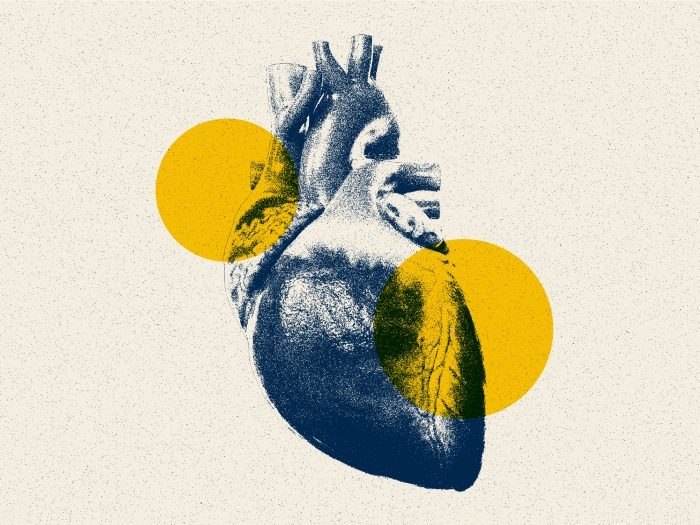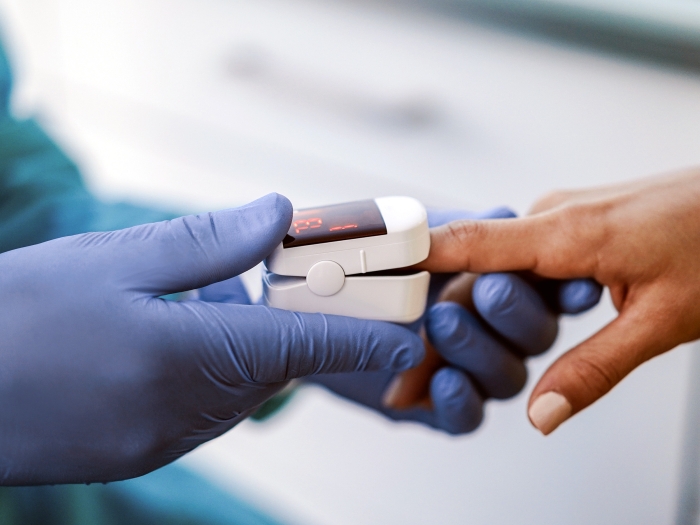Low vision can instill a fear of falling, which keeps many older adults homebound. A U-M occupational therapist outlines guidelines for getting around safely.
1:00 PM
Author |

For those with vision loss, everyday tasks such as grocery shopping or navigating public spaces can be the source of extreme anxiety. Limited vision also may mean risking a fall in an unfamiliar place — a fear that leads many to become homebound and feel isolated.
MORE FROM MICHIGAN: Sign up for our weekly newsletter
Experts at the University of Michigan Kellogg Eye Center are working to combat these fears through teaching of fall prevention techniques.
Registered occupational therapists Ashley Howson and Karen Murphy teach Kellogg patients — and community members — how to identify potential hazards, reduce the risk of falls and learn how to view falls as controllable.
There are also exercises that can be done to increase strength and balance, further lowering risk.
"We aim to help individuals adopt strategies that will empower them to continue completing everyday tasks, like grocery shopping, free from anxiety," says Howson.
Past fall prevention events at Kellogg have also included discussion group. This allows participants to talk about the specific troubles they are experiencing and to share tactics that have worked well for them, Howson says.
In one case, this led to each class participant purchasing, and benefiting from, a small portable flashlight that had received high praise from one attendee.
Howson shares a few tips for preventing falls and regaining independence, whether you have macular degeneration, glaucoma, diabetic retinopathy or another cause of visual impairment:
How to prevent falls
View falls as controllable. For those with vision loss, falling may be inevitable. Knowing this keeps many feeling like it's too risky to leave the house. Learning how to recover from a fall unassisted can help alleviate fear and regain the confidence to leave the house again.
Make modifications to your home. Reduce the risk of falling in the home by checking for the following hazards, which are part of a larger checklist Howson reviews in her classes:
-
Are cords placed out of the flow of traffic?
-
Are rugs and runners slip-resistant?
-
Are carpets and rugs in good condition?
-
Are all floors even, without elevation changes?
-
Are all rooms and hallways lit and light switches accessible when entering a room?
-
Is there something sturdy to hold on to when getting in and out of bed?
-
Do you keep a phone close to you or use a life alert system?
-
Have you installed motion sensor lights or night lights for navigating after dark?
Exercise to maintain or improve balance. Regular exercise is key not just from an overall wellness perspective; it's also a great way to maintain and improve balance.
"Many people don't think to do exercises to work out specific areas like the ankle, but maintaining or improving range of motion in the ankle is important for overall balance," says Howson.
SEE ALSO: 3 Tips for Seniors Visiting the Emergency Department
Set goals. Regaining independence and returning to tasks you love can be daunting when you have a fear of falling, but if you set realistic goals and break it down into steps, it's achievable.
Howson encourages everyone to think about an activity they would like to do — such as shopping at the mall — and figure out how to address the potential fall risks associated with the activity. This may mean using a walker or a cane, figuring out public transportation or ramp access and learning when to ask for help.
Speak up. Fall risks in the community are unavoidable, but potential hazards should be reported when possible. If you see cracked or uneven flooring, improper lighting, broken railings or other accessibility issues, report them to the business or local government.
"When we hear concerns about accessing public areas like bus stops, we encourage people to reach out to the local transit authority," says Howson.
Those with vision impairment interested in learning more about preventing falls can contact Jessica Kamp at 734-232-8233 or [email protected].

Explore a variety of healthcare news & stories by visiting the Health Lab home page for more articles.

Department of Communication at Michigan Medicine
Want top health & research news weekly? Sign up for Health Lab’s newsletters today!





